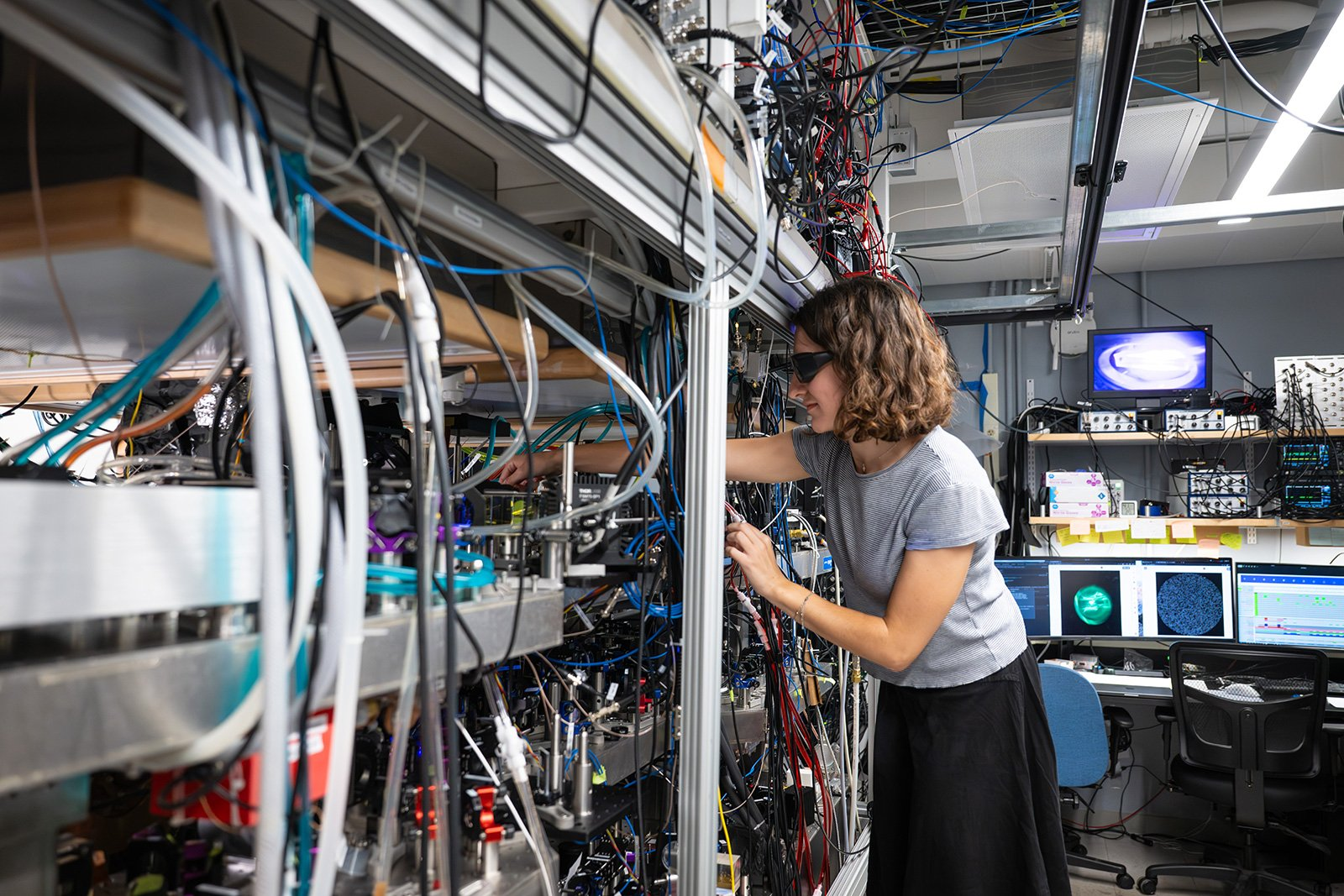Physicists have made an array of 6,100 neutral-atom qubits held in place by lasers, marking a dramatic increase in potential quantum computing size. Nevertheless, the qubits have not yet been entangled, and cannot operate as a computer until this occurs.
The bits in classical computers can either represent ones or zeros, but qubits can combine both states at once in infinite combinations. Although for some processes this provides no advantage, for others it should theoretically enable problem solving almost infinitely faster than using the classical approach.
For 30 years, predictions that quantum computing will revolutionize information processing have come with an implication that this would happen soon. Progress has been slower than observers outside the field were led to believe, partly because many different ways to make a qubit have been found, and efforts have been spread between them.
Nevertheless, many goals have been ticked off and records broken, although some scientists dispute the validity of many claims.
One of the things that has been learned in the process is that practical quantum computers are likely to need far more qubits than originally thought, likely hundreds of thousands. That’s because errors are common, and contrary to expectations are almost impossible to eliminate. Additional qubits that in effect check each other’s work are likely to be the answer, but it’s not long ago that making an array of 20 qubits was big news.
Consequently, the creation of an array with more than 6,000 qubits is a significant advance. “This is an exciting moment for neutral-atom quantum computing,” said Professor Manuel Endres of Caltech in a statement. “We can now see a pathway to large error-corrected quantum computers. The building blocks are in place.”
The team used lasers that can trap atoms of a specific element in place, known as optical tweezers. Using 12,000 tweezers operating at two slightly different wavelengths, the team held 6,100 cesium atoms, each of which serves as a qubit, in a vacuum chamber. Electromagnetic fields can change the state of the atoms to store desired information. One of the advantages of this approach over semiconductors or single electrons is that atoms can be connected to others anywhere within the array, not just their immediate neighbors.
“On the screen, we can actually see each qubit as a pinpoint of light,” said graduate student Hannah Manetsch. “It’s a striking image of quantum hardware at a large scale.”

It looks pretty chaotic, but at the heart of the machine Hannah Manetsch is leaning into is a remarkable level of order.
Image credit: Caltech/Lance Hayashida
The team still need to entangle the atoms in order to make them perform calculations, rather than just storing data as has been demonstrated. To those still struggling to come to grips with the concept of quantum entanglement, this may seem like an unrealistic goal. However, quantum entanglement has been demonstrated over systems with more atoms than this, so there’s no reason to doubt the researchers can do it here.
On the other hand, the system is still a long way from the robustness we expect of the machines you’re reading this on. Qubits rely on their components being in superposition, and this is usually short-lived before interference from the outside world causes it to break. The team maintained superpositions for their array for 12.6 seconds, while moving atoms around the array.
This represents a major advance on periods of less than two seconds achieved with similar systems, but it’s clearly not the end goal.
During that period, the authors report, they manipulated qubits with 99.99 percent accuracy. “Large scale, with more atoms, is often thought to come at the expense of accuracy, but our results show that we can do both,” said graduate student Gyohei Nomura. “Qubits aren’t useful without quality. Now we have quantity and quality.”
The study is published in Nature.
Source Link: Record 6,100 Qubits Form World’s Largest Quantum Array